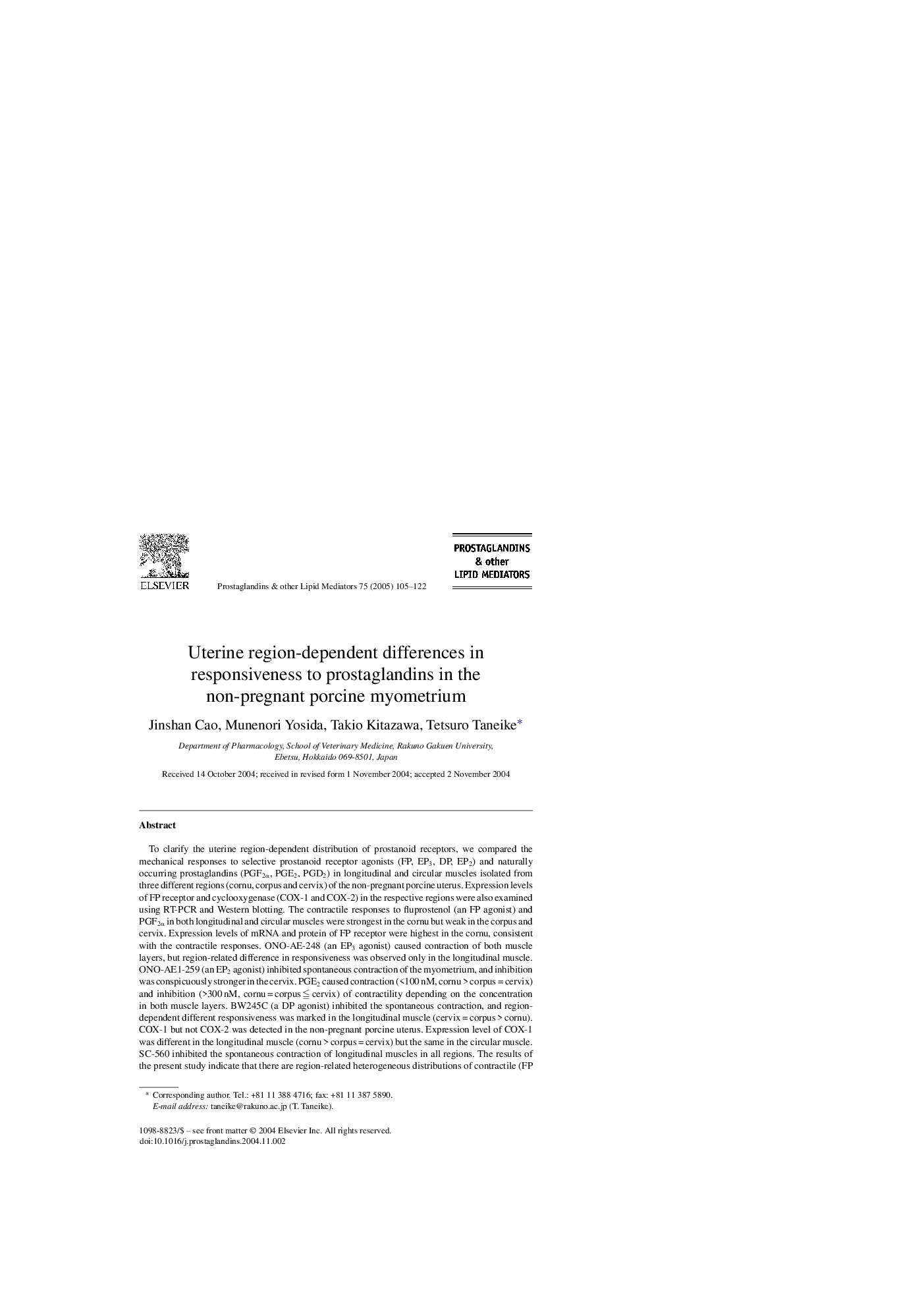| Article ID | Journal | Published Year | Pages | File Type |
|---|---|---|---|---|
| 9894098 | Prostaglandins & Other Lipid Mediators | 2005 | 18 Pages |
Abstract
To clarify the uterine region-dependent distribution of prostanoid receptors, we compared the mechanical responses to selective prostanoid receptor agonists (FP, EP3, DP, EP2) and naturally occurring prostaglandins (PGF2α, PGE2, PGD2) in longitudinal and circular muscles isolated from three different regions (cornu, corpus and cervix) of the non-pregnant porcine uterus. Expression levels of FP receptor and cyclooxygenase (COX-1 and COX-2) in the respective regions were also examined using RT-PCR and Western blotting. The contractile responses to fluprostenol (an FP agonist) and PGF2α in both longitudinal and circular muscles were strongest in the cornu but weak in the corpus and cervix. Expression levels of mRNA and protein of FP receptor were highest in the cornu, consistent with the contractile responses. ONO-AE-248 (an EP3 agonist) caused contraction of both muscle layers, but region-related difference in responsiveness was observed only in the longitudinal muscle. ONO-AE1-259 (an EP2 agonist) inhibited spontaneous contraction of the myometrium, and inhibition was conspicuously stronger in the cervix. PGE2 caused contraction (<100 nM, cornu > corpus = cervix) and inhibition (>300 nM, cornu = corpus â¦Â cervix) of contractility depending on the concentration in both muscle layers. BW245C (a DP agonist) inhibited the spontaneous contraction, and region-dependent different responsiveness was marked in the longitudinal muscle (cervix = corpus > cornu). COX-1 but not COX-2 was detected in the non-pregnant porcine uterus. Expression level of COX-1 was different in the longitudinal muscle (cornu > corpus = cervix) but the same in the circular muscle. SC-560 inhibited the spontaneous contraction of longitudinal muscles in all regions. The results of the present study indicate that there are region-related heterogeneous distributions of contractile (FP and EP3, cornu > cervix) and relaxant (EP2 and DP, cervix > cornu) prostanoid receptors and COX-1 in the porcine uterus. The results also suggest involvement of endogenous PGs in the regulation of spontaneous uterine contractility. Region-related differences in COX-1 and prostanoid receptors might be necessary to produce a gradient of uterine motility decreasing from the cornu to the cervix that manages movement of luminal contents.
Related Topics
Life Sciences
Biochemistry, Genetics and Molecular Biology
Biochemistry
Authors
Jinshan Cao, Munenori Yosida, Takio Kitazawa, Tetsuro Taneike,
